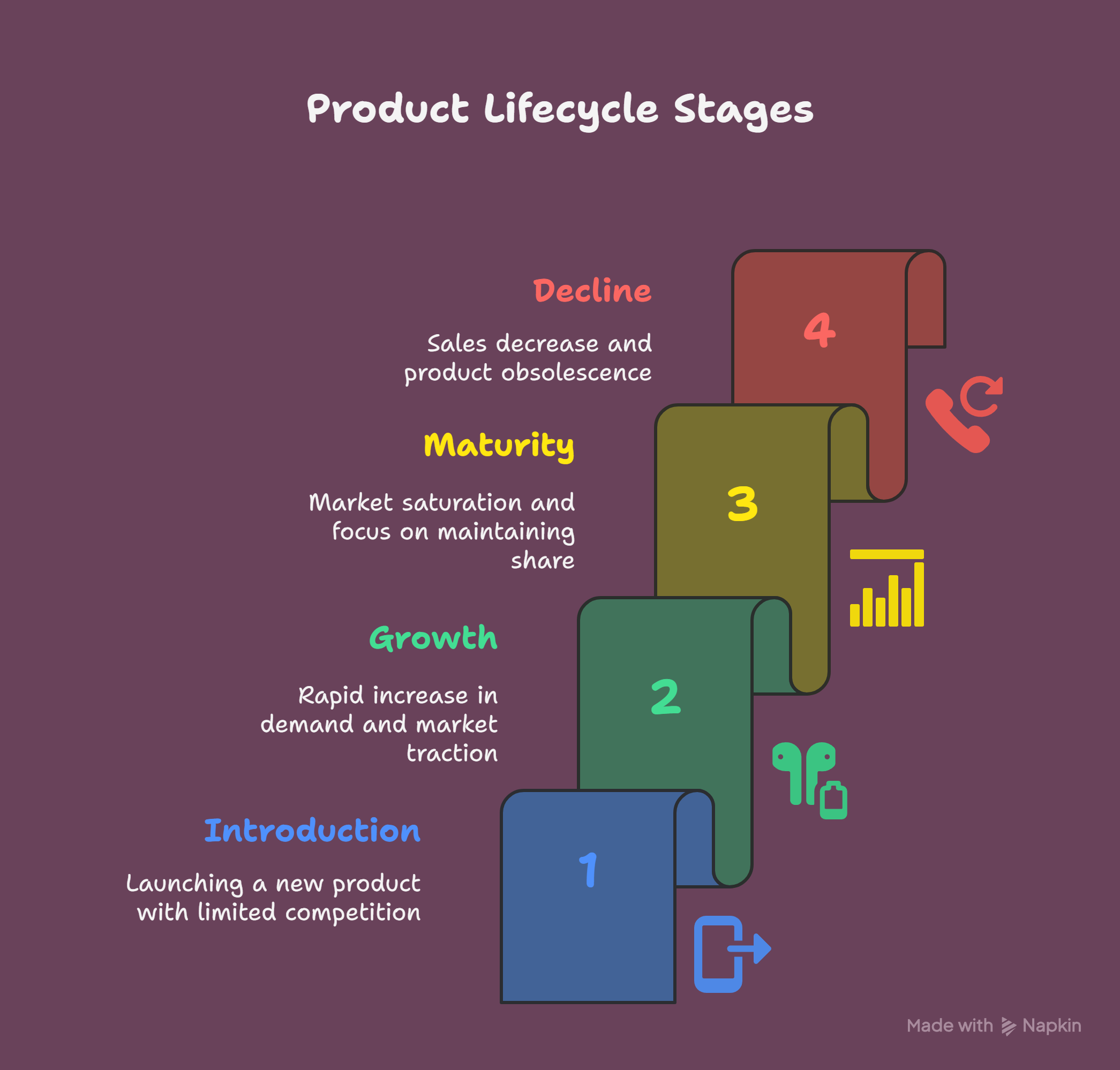Ever wondered why some products vanish from shelves faster than a free donut at a police convention? It's all thanks to the product life cycle. Think of it as the journey every product takes, from bright-eyed newbie to seasoned veteran (or forgotten relic).
Understanding this cycle is key for businesses. It helps them plan marketing strategies, predict sales, and ultimately, stay ahead of the game.
Exploring a career in Product Management? Apply now!
The Four Main Stages
Every product goes through four main stages: introduction, growth, maturity, and decline. It's like watching a plant sprout, flourish, bear fruit, and eventually wither.
Let's break down each stage with real-world examples.
Introduction: This is the launch phase. The product is brand new, fresh out of the oven. Think of the first iPhone – revolutionary and expensive.
Marketing focuses on creating awareness. Sales are slow, profits are slim, and competition is limited.
Growth: This is where the magic happens. The product gains traction. Demand explodes. Like wildfire, word spreads. Think of AirPods – initially a bit quirky, now ubiquitous.
Competition starts to heat up as others see the potential.
Maturity: The market becomes saturated. Growth slows. Think of the Toyota Camry – a reliable, steady seller, but not exactly setting the world on fire.
Companies focus on maintaining market share and fending off rivals.
Price wars and aggressive promotions become common. Innovation is key to extending this stage.
Decline: The inevitable happens. Sales dwindle. Profits shrink. Think of landline phones – once essential, now largely replaced by cell phones.
Companies may discontinue the product, find niche markets, or drastically reduce production.

Real-World Examples Across Industries
The product life cycle applies across industries. Here are some examples:
Tech: The rise and fall of the CD player. From cutting-edge technology to a nostalgic relic in just a few decades. Streaming services now dominate.
Fashion: Trends come and go. Remember those low-rise jeans everyone wore in the 2000s? Yeah, me neither. Fashion is fickle.
Food & Beverage: Think about the cronut craze. It was everywhere, then *poof*, almost vanished. Food trends, like fashion, are often fleeting.
.png)
Strategies for Each Stage
Managing the product life cycle effectively is crucial for success. Companies use different strategies for each stage.
For example, during the introduction phase, heavy marketing is essential to create awareness. In the maturity phase, the focus shifts to customer retention and innovation.
Understanding which stage your product is in helps you choose the right strategies.
For example, during decline, companies may choose to discontinue the product or find new niche markets.
Conclusion
The product life cycle is a powerful concept for understanding the journey of a product. By recognizing the stages and adapting strategies, businesses can maximize their chances of success.
From introduction to decline, each phase presents unique challenges and opportunities. Staying agile and informed is crucial for navigating the ever-changing market landscape.
Dreaming of a Product Manager career? Start with Product Management Certification with Jobaaj Learnings.
















